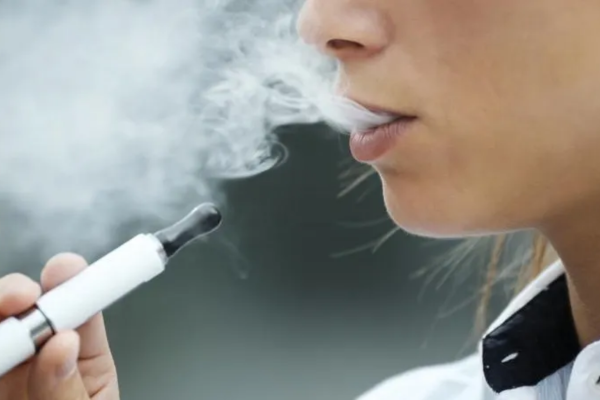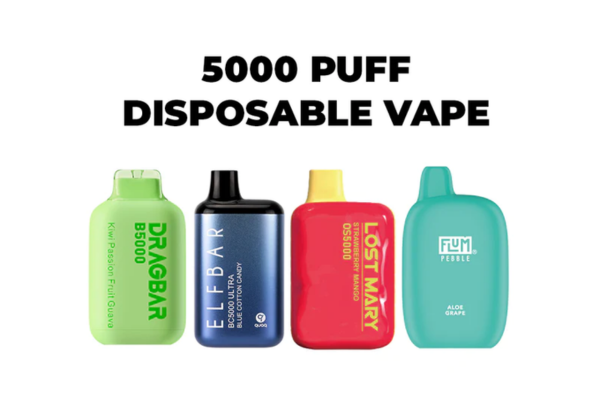The rise in popularity of disposable vapes represents a significant shift in the global tobacco and nicotine consumption landscape. Initially emerging as a convenient alternative to traditional cigarettes, disposable vape have quickly ascended to become a favored choice among a wide demographic, spanning avid smokers seeking harm reduction alternatives to casual users attracted by the variety of flavors and ease of use. This surge in popularity underscores a broader global phenomenon where vaping has not only redefined personal nicotine consumption but also posed new challenges and considerations for international public health policies.
Understanding international vaping laws becomes crucial, particularly for travelers. The legal landscape for disposable vapes varies dramatically from one country to another, influenced by public health concerns, regulatory frameworks, and cultural attitudes towards smoking and nicotine use. For users, especially those who travel frequently, navigating these varying laws is essential to ensure compliance and avoid potential legal issues. This complexity highlights the importance of a comprehensive guide that elucidates the international laws governing the use of disposable vapes.
As disposable vapes continue to proliferate worldwide, they bring to the forefront discussions on health, regulation, and the future of smoking cessation tools. This guide aims to explore the intricate tapestry of international vaping laws, offering users and particularly travelers, an authoritative overview of how different regions approach the regulation of disposable vape. By delving into the specifics of these regulations, we embark on a journey to understand not just the global phenomenon of vaping but the critical importance of staying informed in a rapidly evolving legal and social landscape.

The Basics of Disposable Vapes
Disposable vape have carved a significant niche within the broader vaping market, appealing to users for their convenience and simplicity. These devices are designed for single use, coming pre-filled with e-liquid and equipped with a battery meant to last until the e-liquid runs out. After use, the entire unit is disposed of, making disposable vape an attractive option for those seeking a no-fuss vaping experience.
Definition and Characteristics of Disposable Vapes
A disposable vape is a self-contained, non-rechargeable device designed to provide users with a certain number of puffs before being disposed of. These devices are distinguished by their ease of use—requiring no setup, charging, or refilling—and their portability, making them particularly appealing to travelers and individuals new to vaping. Disposable vapes often come in a wide array of flavors, further contributing to their popularity among a diverse user base.
Key Reasons Behind the Specific Regulations Targeting Disposable Vapes
The regulation of disposable vapes is influenced by several key factors:
- Youth Appeal: The variety of flavors and the perceived harm reduction compared to traditional cigarettes make disposable vapes particularly appealing to younger demographics. This has prompted concerns about youth access to nicotine products and has been a driving force behind specific regulations.
- Environmental Concerns: The single-use nature of disposable vapes raises environmental concerns, as discarded devices contribute to electronic waste. This aspect has led to calls for stricter regulations around the disposal and recycling of these products.
- Public Health: While disposable vapes are often marketed as safer alternatives to smoking, the long-term health impacts of vaping are still under investigation. Governments and health organizations seek to regulate these products to protect public health, especially in the absence of conclusive research.
Understanding the basic definition and characteristics of disposable vape, along with the reasons they are regulated differently across jurisdictions, is crucial for users. It highlights the importance of being aware of local laws and regulations, especially for travelers who may encounter a range of restrictions on disposable vapes depending on their destination. This awareness ensures not only legal compliance but also responsible usage in line with public health guidelines and environmental considerations.
North America: Varied Regulations Across Borders
In North America, the regulatory landscape for disposable vape is marked by significant variation across borders, particularly between the United States and Canada. These differences reflect the diverse approaches to public health policy, consumer protection, and youth prevention strategies in each country.
United States: Federal Oversight and State-Specific Laws
The United States regulates disposable vapes under the Food and Drug Administration (FDA), which oversees product standards, marketing, and sales to minors. Despite federal guidelines, individual states have the autonomy to implement their own regulations, leading to a patchwork of laws that can greatly differ from one state to another:
- Flavor Bans: Some states, like Massachusetts and California, have enacted bans on flavored disposable vapes to curb their appeal to younger users.
- Age Restrictions: While the federal minimum age to purchase tobacco products, including disposable vape, is 21, enforcement and additional restrictions vary by state.
- Public Usage: Regulations on where individuals can vape also differ, with some states incorporating disposable vape into existing smoking bans in public spaces.
Canada: Comprehensive Federal and Provincial Regulations
Canada’s approach to disposable vapes is characterized by a combination of federal regulations and provincial nuances. Health Canada oversees the federal regulation of vaping products, focusing on reducing youth access and promoting public health:
- Nicotine Concentration Limits: Canada has set limits on the maximum nicotine concentration allowed in vaping products, including disposable vape, to reduce addiction risk.
- Marketing Restrictions: Regulations aim to prevent marketing strategies that target minors, including restrictions on certain flavors and advertising practices.
- Provincial Differences: Similar to the U.S., Canadian provinces can impose their own rules, leading to variations in sales restrictions, age limits, and where vaping is permitted.
Highlighting States and Provinces with Strict Bans vs. More Lenient Allowances
The regulatory diversity in North America means that users of disposable vape must be vigilant and informed about the specific laws in their location or travel destination. For example, a state with strict flavor bans and public usage restrictions may require different considerations than a province with more lenient allowances.
Navigating the vape laws in North America underscores the importance of understanding both the broader federal guidelines and the local regulations that may affect the availability and use of disposable vapes. For travelers and residents alike, staying informed about these regulations is crucial for ensuring compliance and respecting the public health goals underlying these laws.
Europe: The Impact of the Tobacco Products Directive (TPD)
In Europe, the regulation of disposable vapes falls under the broad umbrella of the Tobacco Products Directive (TPD), a legislative framework established by the European Union to harmonize the regulation of tobacco and vaping products across member states. The TPD aims to ensure a high level of health protection for European citizens while facilitating the functioning of the internal market for tobacco and related products.
How the TPD Affects Disposable Vapes in the European Union
The TPD introduces specific measures that directly impact disposable vapes, focusing on consumer safety, product standardization, and youth protection:
- Nicotine Limits and Packaging Requirements: The directive sets a maximum nicotine concentration of 20 mg/mL for e-liquids and mandates that disposable vapes and other vaping products adhere to strict packaging and labeling requirements, including health warnings.
- Cross-border Sales Regulation: The TPD also regulates cross-border sales of vaping products, requiring vendors to register and comply with the regulations of the member state where products are sold.
- Reporting Obligations: Manufacturers and importers of disposable vapes must notify health authorities about the ingredients, emissions, and market data for their products, ensuring transparency and oversight.
Country-specific Regulations in Key European Countries Outside the EU Framework
While the TPD provides a cohesive regulatory framework for EU member states, European countries outside the EU, such as Norway and Switzerland, have developed their own regulations regarding disposable vapes. These regulations may align with TPD standards to some extent but can also include country-specific measures addressing public health concerns unique to each nation.
Navigating Vaping Laws in the European Union
For individuals using disposable vapes in the European Union, understanding the nuances of the TPD and its implementation across different countries is crucial:
- Research Local Regulations: Despite the harmonization efforts of the TPD, variations in implementation and additional national regulations mean that users must be aware of the specific laws in their destination country.
- Adhere to Packaging and Nicotine Restrictions: Travelers carrying disposable vapes should ensure their products comply with TPD standards to avoid issues at customs or with local authorities.
- Stay Informed of Changes: The regulatory landscape for vaping products, including disposable vapes, is subject to change as new research emerges and public health strategies evolve. Staying informed about these developments is key to compliant and responsible use.
The TPD’s impact on disposable vapes in the European Union highlights the importance of regulatory frameworks in balancing the benefits of vaping products with the need to protect public health, particularly among young people. Understanding and complying with these regulations ensures that users can enjoy disposable vapes within the legal and safety standards set forth by the EU and its member states.

Oceania: Australia’s Unique Stance and New Zealand’s Openness
Oceania presents a study in contrasts regarding the regulation of disposable vape, with Australia and New Zealand adopting markedly different approaches. This divergence reflects broader themes in public health policy and attitudes towards harm reduction and tobacco control.
Australia’s Prescription Model for Nicotine Disposable Vapes
Australia has taken a particularly cautious approach to nicotine vaping products, including disposable vape. Under this unique regulatory framework:
- Prescription Requirement: Nicotine disposable vape are not available over the counter and can only be obtained with a prescription from a licensed healthcare provider. This policy aims to treat nicotine addiction and limit vaping products’ accessibility to the general public, especially youths.
- Impact on Users: For Australian residents and travelers alike, this means that possession and use of nicotine disposable vapes without a valid prescription is illegal, leading to potential fines or penalties.
New Zealand’s Progressive Approach to Vaping
In contrast, New Zealand has adopted a more liberal stance towards disposable vape, recognizing them as a tool for smoking cessation:
- Regulated Market: Disposable vapes are legally sold to adults, with regulations focusing on safety standards, marketing restrictions, and ensuring products do not appeal to minors.
- Public Health Strategy: New Zealand’s approach is part of a broader public health strategy aimed at reducing smoking rates. The government actively promotes vaping as a less harmful alternative for smokers looking to quit.
Navigating Vaping Laws in Oceania
The starkly different approaches of Australia and New Zealand to disposable vapes underscore the importance of understanding local regulations for residents and travelers:
- Research Before Travel: Those planning to visit or transit through Australia or New Zealand should familiarize themselves with each country’s vaping laws, especially regarding nicotine products.
- Compliance is Key: In Australia, ensure you have the necessary prescription for nicotine disposable vape. In New Zealand, adhere to regulations around purchase, use, and marketing of vaping products.
- Stay Informed: As public health policies and attitudes towards vaping continue to evolve, staying updated on legal changes and guidelines is crucial for anyone using disposable vape in these countries.
Oceania’s divergent regulatory landscapes highlight the complex interplay between public health goals, harm reduction strategies, and legal frameworks governing disposable vapes. By staying informed and compliant, users can navigate these differences responsibly, ensuring their vaping practices align with local laws and health policies.
Africa: An Emerging Market with Diverse Regulations
Africa’s approach to disposable vapes is as varied as its cultures, with regulations spanning from strict bans to gradually developing frameworks. This diversity reflects not only the continent’s vastness but also the differing public health priorities, legal systems, and societal attitudes towards vaping.
Overview of African Nations with Specific Laws Regarding Disposable Vapes
In Africa, the legal landscape for disposable vapes is rapidly evolving, with some countries establishing clear regulations and others still in the process of formulating their policies:
- South Africa: South Africa represents one of the continent’s more progressive stances on vaping, allowing the sale and use of disposable vapes with regulations aimed at preventing youth access and ensuring product safety.
- Egypt: Egypt permits the sale of disposable vapes, but the regulatory environment is tightening, with increasing scrutiny on sales channels and product standards to protect consumers.
- Kenya: Kenya is navigating its path regarding vaping regulation, balancing the potential for harm reduction with public health concerns, particularly around youth vaping.
The Evolving Landscape of Vaping Acceptance and Regulation on the Continent
The approach to disposable vapes in Africa is indicative of a continent at a crossroads, with public health officials, governments, and the vaping industry working to understand and shape the future of vaping:
- Public Health Debates: Across Africa, there is ongoing debate about the role of disposable vapes in smoking cessation versus the potential risks of introducing new nicotine products to the market.
- Regulatory Development: As the market for disposable vapes grows, more African countries are expected to develop and refine their regulatory frameworks, drawing on global best practices and local public health needs.
Navigating Vaping Laws in Africa
For individuals and businesses engaged with disposable vapes in Africa, understanding the continent’s regulatory diversity is crucial:
- Stay Informed: Given the rapidly changing legal landscape, staying informed about the current regulations in specific countries is essential for compliance and responsible use.
- Adapt to Local Contexts: The regulatory environment and societal attitudes towards vaping can vary significantly within the continent, necessitating a flexible approach to marketing, sales, and use.
- Engage with Policymakers: There is an opportunity for stakeholders to engage with policymakers in developing balanced regulations that protect public health while recognizing the potential benefits of vaping for adult smokers.
Africa’s emerging regulatory landscape for disposable vapes highlights the continent’s cautious yet open approach to new nicotine delivery systems. As regulations continue to evolve, staying informed and engaging constructively with the regulatory process will be key for those looking to navigate the vaping market in Africa responsibly.
South America: Developing Vaping Regulations
In South America, the approach to disposable vapes is under development, with countries across the continent navigating the balance between public health concerns, consumer demand, and the global trend towards vaping. The regulatory environment is diverse, reflecting each country’s unique public health priorities, legal frameworks, and cultural attitudes toward vaping and tobacco use.
Status of Vaping and Disposable Vape Allowances or Bans in South American Countries
- Brazil: Brazil represents one of the stricter stances in South America, with a comprehensive ban on the sale, importation, and advertising of disposable vapes. This prohibition reflects concerns over public health impacts and the potential for youth vaping.
- Argentina: Similarly, Argentina has stringent regulations regarding disposable vapes, focusing on preventing access to and promotion of vaping products to protect public health.
- Uruguay: Known for its progressive tobacco control policies, Uruguay extends its strict regulations to include disposable vapes, emphasizing the protection of public health over the vaping industry.
- Chile and Colombia: These countries are in the process of developing more detailed regulations for disposable vapes, aiming to strike a balance between allowing adult smokers access to alternative nicotine delivery systems and protecting the broader population, especially youths, from potential harms.
How Regulatory Environments are Shaping Up in Response to Vaping’s Popularity
The evolving regulatory stance on disposable vapes in South America reflects a cautious approach to a rapidly growing market. Governments are carefully considering the implications of vaping on public health, particularly in the context of:
- Youth Vaping Prevention: A key focus for many South American countries is preventing the uptake of vaping among youths, with regulations designed to limit the appeal and accessibility of disposable vapes to minors.
- Public Health Research: As research into the long-term health effects of vaping continues to develop, South American countries are closely monitoring findings to inform their regulatory decisions.
Navigating Vaping Laws in South America
For individuals traveling to or residing in South America, understanding the local regulations surrounding disposable vapes is crucial:
- Research Local Laws: Before traveling, individuals should research the specific vaping regulations of their destination country in South America to ensure compliance.
- Adapt to Changing Regulations: The legal landscape for disposable vapes in South America is dynamic. Travelers and residents alike should stay informed about changes to navigate the regulations successfully.
- Prioritize Public Health: When using disposable vapes in South America, it’s important to respect local public health efforts and regulations, including restrictions on use in public spaces and sales to minors.
The developing vaping regulations in South America highlight the continent’s careful consideration of the impact of disposable vapes on public health. As countries continue to study vaping’s effects and global regulatory trends, the legal framework for disposable vapes in South America is likely to evolve, emphasizing the importance of staying informed and respectful of local laws.

Conclusion: Vaping Responsibly While Exploring the World
Navigating the intricate landscape of international vaping laws underscores a critical lesson for the global community of vapers, especially travelers: the paramount importance of vaping responsibly and being acutely aware of local regulations. The journey through the diverse regulatory environments from North America’s patchwork policies to Europe’s Tobacco Products Directive (TPD), and from the stringent controls in Asia and the Middle East to the evolving frameworks in Oceania and Africa, illuminates the global dialogue on vaping.
Recap of the Importance of Being Aware of Vaping Regulations in Global Destinations
This comprehensive exploration reveals that while disposable vapes offer a convenient option for nicotine consumption, they also pose unique challenges across different jurisdictions. Regulations vary widely, driven by public health concerns, cultural attitudes, and the need to balance harm reduction with preventing youth access. For travelers, this diversity necessitates a proactive approach to understand and comply with the laws of each destination.
Encouraging Responsible and Informed Vaping Practices Among Travelers
To navigate the global patchwork of vaping laws, vapers are encouraged to:
- Conduct Thorough Research: Prior to travel, investigate the vaping regulations of your destination. Understanding local laws can prevent unintended legal issues and ensure a smooth journey.
- Adapt and Respect: Be willing to adapt your vaping practices to align with local norms and regulations. This respect for local laws not only avoids potential penalties but also demonstrates a commitment to responsible vaping.
- Stay Informed: The regulatory landscape for disposable vapes is dynamic, with laws evolving in response to new research, public health initiatives, and societal trends. Staying informed about these changes is crucial for both current compliance and future travel planning.
Final Thoughts
As the popularity of disposable vapes continues to grow, so too does the complexity of navigating international vaping laws. The responsibility lies with individual vapers to remain informed, compliant, and respectful of each country’s stance on vaping. By fostering a culture of responsible vaping, the community can contribute positively to the ongoing global conversation, ensuring that vaping remains a viable and respected choice for adult smokers seeking alternatives around the world.

